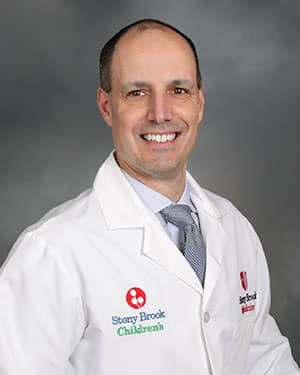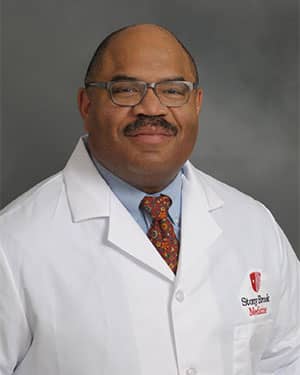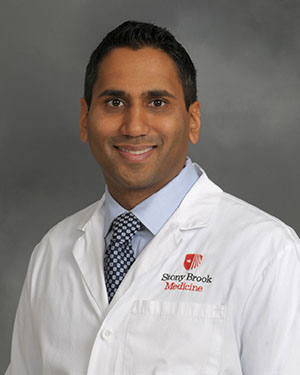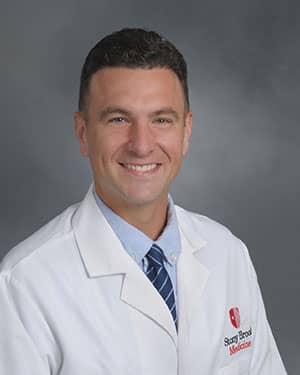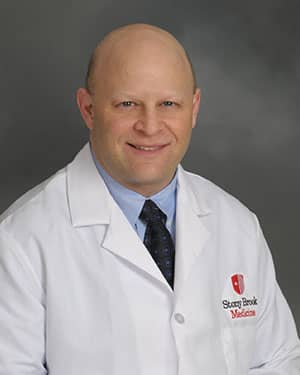Navigation Pediatric Orthopedics
Pediatric Orthopedics
Stony Brook Orthopaedic Associates' Division of Pediatric Orthopaedics at Stony Brook Children’s is the premier resource for children in Suffolk County with orthopaedic (bone) issues. The division combines clinical excellence, 24/7 access to pediatric orthopaedic surgeons and leading-edge research.
It is often the first—and only—stop for parents who trust Stony Brook’s capabilities. Other area hospitals also rely on Stony Brook for their most complex and challenging cases.
Our fellowship-trained orthopaedic surgeons provide coordinated and comprehensive medical and surgical pediatric orthopaedic services. They are also at the forefront of innovation, performing the world’s first internal skeletal kinetic distractor (ISKD) procedure on the humerus. The results of this groundbreaking limb-lengthening procedure were recently presented at a national meeting of orthopaedic physicians.
This pioneering work, like so much of the care at Stony Brook Children’s, has the potential to advance pediatric medicine—and offers children on Long Island round-the-clock access to world-class care.
Services
Pediatric orthopaedic services are available on an inpatient and outpatient basis. The physicians see patients in clinics at St. Charles Hospital and Nassau University Medical Center, as well as at the Pediatric Emergency Department at Stony Brook Children's. Surgery is performed at Stony Brook Children's.
The department's capabilities include state-of-the-art diagnostics and surgery and run the full gamut from treating simple fractures to delicate spinal surgery. Some of the conditions treated include spinal deformity, joint reconstruction, trauma, club foot, developmental deformity, degenerated and herniated discs, sports injuries, limb lengthening, scoliosis and many others.
State-of-the-Art Diagnostics
Our department has access to the latest diagnostic techniques, which help deliver safer, faster and more accurate imaging — with special attention on using the lowest doses of radiation possible.
Techniques available include:
- Minimally invasive CT-guided biopsy
- X-ray
- CT scan
- MRI
- Nuclear medicine
- Surgery
- EOS low dose radiation imaging
Whenever possible, we use the most minimally invasive techniques possible, employing video-assisted surgical technology.
Some of the procedures we specialize in include:
- Video-assisted hip reconstruction
- Thoracopy
- Multiple trauma surgery
- Repair of developmental deformities
- Scoliosis surgery
- Limb lengthening/Ilizarov surgery
- Excision of tumors
In the case of scoliosis surgery, we have helped pioneer a unique anesthesia protocol for pain control that gets the patient out of the hospital, on average, two days earlier.
Our Team
Our team is led by four fellowship-trained pediatric orthopaedic surgeons — James Barsi, MD, Wesley Carrion, MD, Brian Lynch, MD, and David Wallach, MD — who have the training and experience to handle every aspect of pediatric orthopaedic conditions, whether congenital or acquired. The team also includes registered pediatric physician assistants. Additionally, Fazel Khan, MD completed a musculoskeletal surgical oncology fellowship and specializes in the treatment of musculoskeletal oncological conditions in children and adults.
In addition, the team works closely with other departments at the hospital, including the Pediatric Emergency Department, Pediatric Neurosurgery, the Pediatric Intensive Care Unit (PICU), Pediatric Oncology, Pediatric Plastic Surgery, as well as with hand surgeons and other pediatric surgeons, to provide state-of-the-art care for multiple injuries or complex disabilities.
Locations
Commack Pediatric Orthopedics
500 Commack Road, Suite 100Commack, NY 11725
For appointments: (631) 444-4233
East Setauket Pediatric Orthopedics
14 Technology Drive, Suites 11, 12 and 15East Setauket, NY 11733
For appointments: (631) 444-4233
Riverhead Pediatric Orthopedics
74 Commerce Drive, Suite 4Riverhead, NY 11901
For appointments: (631) 638-2663
Southampton Pediatric Orthopedics
240 Meeting House LnSouthampton, NY 11968
For appointments: (631) 726-8717
Patient Resources
As part of our comprehensive, full-spectrum approach to pediatric orthopaedic care, we have developed a working relationship with St. Charles Hospital in Port Jefferson for patients who need rehabilitation.
We continue to follow patients while working in tandem with this rehabilitation program, which offers a team consisting of:
- A physiatrist (a physician specializing in physical medicine and rehabilitation)
- Nurses
- Therapists (physical, occupational, respiratory and recreational)
- Speech language pathologists
- Neuropsychologist
- Audiologists
- Clinical dietitians
- Orthotists/prosthetists
- Care managers
- Social workers
Research and Education
As an academic medical center, Stony Brook Children's has the privilege of training the next generation of physicians — something that also brings many benefits to hospital patients, including access to the latest protocols and procedures, as well as to some of the best minds in medicine.
Twenty-five residents and two fellows are currently trained at Stony Brook in pediatric orthopaedic medicine, many of whom go on to receive national attention for their clinical and research achievements. Currently, the department is dedicating its research efforts to scoliosis and limb lengthening.

